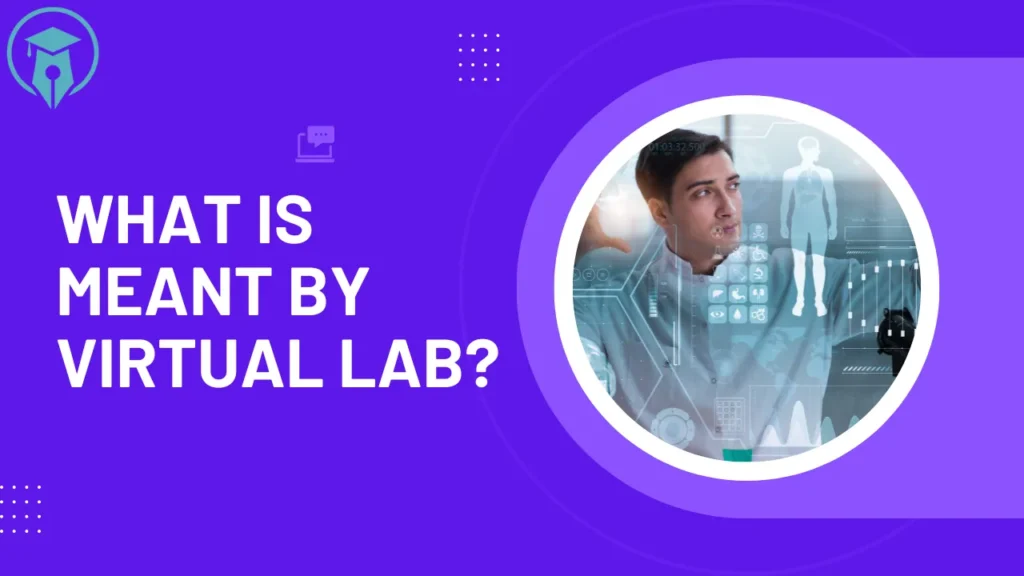What is meant by virtual lab? Learn what virtual labs are: how these practical elements of online courses work that provide real experiences from anywhere in the world.

The practical elements of a degree – or any course, really – are essential in acquiring some of the most important skills for the field of study and securing that dreamed career. But what to do when the course is online? Distance education has gained a definite place in higher education, boosted by the pandemic. With this, more solutions have also emerged for practical learning to happen from anywhere in the world. And one of them is the virtual lab.
This is a sample ad block for layout testing.
What is meant by virtual lab?
Virtual labs are digital and interactive simulated learning environments. They allow students to complete classes and lab experiments in an online environment, explore concepts and theories in practice, try out techniques, and become familiar with equipment without having to enter a physical lab.
This is a sample ad block for layout testing.
Through software and animations, students have alternative access to classes and opportunities that would otherwise be inaccessible in an online course.
However, the website Educause explains that “physical equipment, such as radio telescopes or electron microscopes, that can be controlled by distant users are considered remote instruments and not a virtual laboratory”.
So what are the characteristics of a virtual lab?
Virtual lab features
One of the main characteristics of virtual laboratories is their interactivity. Everything in it can be manipulated by users regardless of location. Another feature, which differs from other simulators, is that they have a didactic character and purpose and professional practice.
By accurately representing the actions, reactions, and consequences of handling materials and equipment, virtual labs provide a way for students to participate in lab-based learning activities without the overhead, dangers, or overcrowding of a physical lab. Students have access to virtual representations of the equipment and supplies they would find in a physical lab.
Simulations visualize science at the molecular level. Students can apply their scientific knowledge and use advanced laboratory equipment to solve real-world challenges such as DNA and gene sequencing, chemical reactions and responses to cancer treatment.
Labster virtual labs, for example, have gamified 3D virtual learning environments that can be a lab, a forest or desert plains. The student navigates through a narrative with a scoring system.
That is, virtual laboratories take different forms and use different tools so that students can learn remotely in an interactive virtual immersion, with the guidance of a professor.
Advantages of the virtual lab
Practical experience is necessary in any course, be it an undergraduate, specialization, short-term or vocational, because it exposes the student to real environments of the sector, in which he will work when graduated, and provides the development of skills that will help in the market work throughout your career.
Virtual labs help to:
- Offer all aspects with practical applications of the curriculum of an online course, without worrying about equipment limits, number of students per lab or funding.
- Unite the teaching process of theoretical ideas and practical application, as in a face-to-face course.
- Conduct experiments anywhere and at any time.
- Test the same experiments as many times as necessary until you learn.
- Control the characteristics of the experiment and observe the changes in the results without needing a supervisor and without exposing yourself to any risk.
- Record all results electronically to analyze them whenever you want with advanced software.
- Perform student assessment electronically.
Disadvantage of virtual lab
Despite the impressive level of realism of virtual labs and their many advantages for those studying online, they cannot match the full experience of being in a physical lab and, for example, the real risks of working with physical solutions.
Students need internet access that can handle the size of the software and the applications that run it sometimes have flaws or limitations. Furthermore, most of the virtual lab tools available on the market today can be expensive and not accessible to students or teachers with disabilities.
In other words, there is still room to evolve.
Examples of universities with virtual labs
The Engineering Institute of Technology (EIT), an institute in Australia specializing in engineering courses, has state-of-the-art technologies such as practical workshops, remote laboratories and simulation software.
As it offers different courses online, it holds hands-on workshops in remote and virtual labs to contextualize the content of classes within the industry and are more comprehensive than most courses taught in traditional classrooms because they provide students with additional applied knowledge .
EIT online students can use:
- Virtual labs with software for a range of engineering applications such as science, modeling and analysis, power grid design, programming, model building, industrial process control, project management and virtual power plant operations.
- Remote labs that are an equivalent to traditional engineering labs through the use of physical equipment and sensors. Practices are controllable, interactive, variable and viewed in real time by web cameras.
Oklahoma State University , in the United States, has virtual laboratories for courses in the Department of Information Technology, with the same software as the computer labs on campus. Students can connect to Virtual Labs from a browser or by installing an application on their computer. There are more than 20 software.